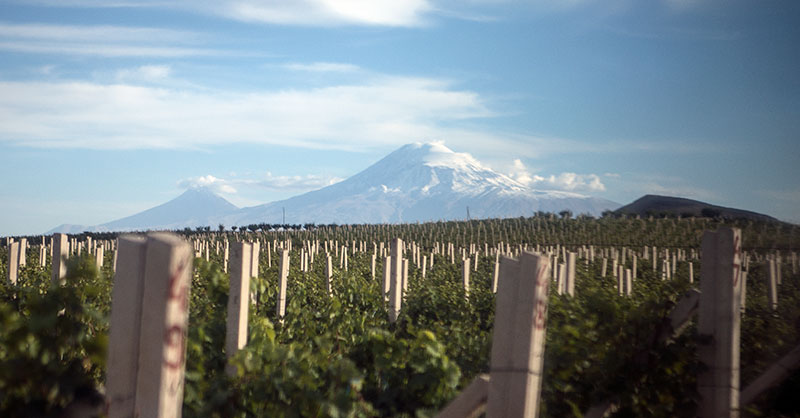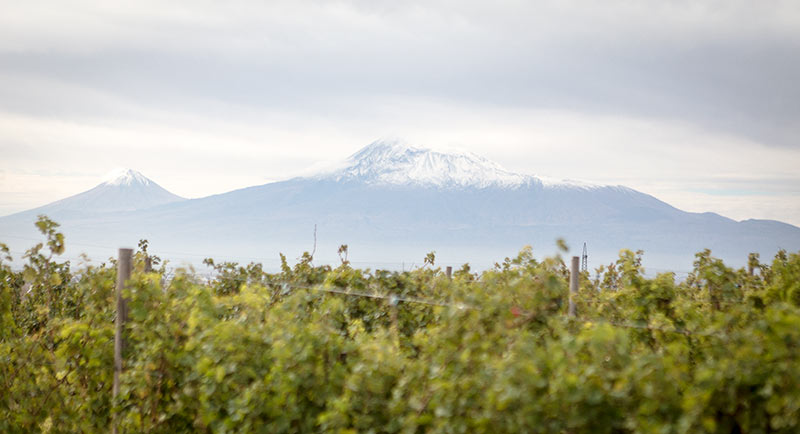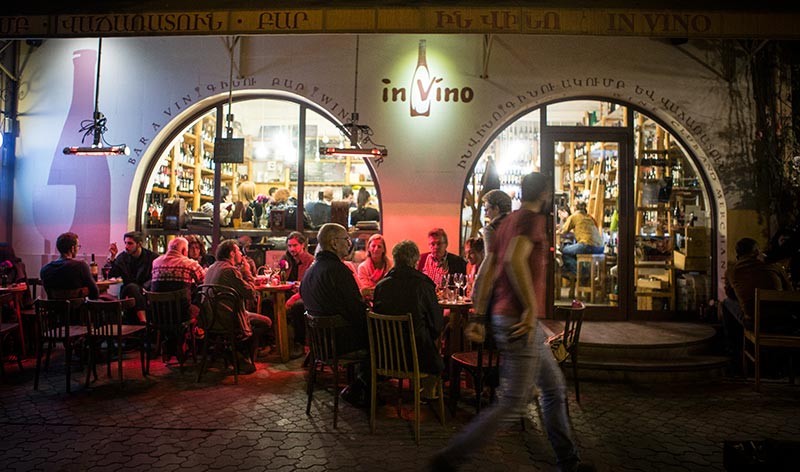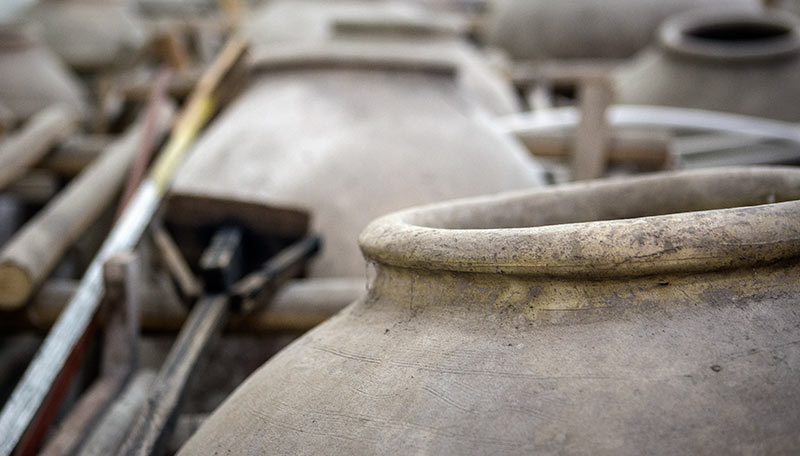By way of giving a little background read this introduction to Armenian wines followed by the oldest wine cellar in the world, it will make a review of Armenia’s wine bars more cohesive.
Of course what makes all of these bits stick together even more are the individual wineries. There are only about 55 wineries for the entire country so Armenia is still very much in a growth phase in terms of its overall wine production. That said, they’ve come a lot way in a very short time and it’s interesting to take in an overview of a few of the wineries that I visited and please look to the very bottom for full wine reviews.
Armenian Wine
To talk about Armenian wines means to talk about Armenian Wines as this company, founded in 2008 produces something like 67% of all the wine in Armenia which breaks down to about four million still and one million sparkling wines. And then there’s the Brandy they started in 2010. It is most definitely a very, very large production winery with state-of-the-art production equipment that’s all spotless.
In terms of the wines, I found most of them trying to walk a fine line between unique and interesting and not really doing much at all. They’ve recently changed their main winemaker to a German fellow, Josef Watzl who has a pretty linear approach to the winemaking and is bound to change things up a good deal. I don’t think anything we tasted he’d even made so it’s hard to judge what the future of the winery holds.
Van Ardi
A much smaller affair than Armenian Wine–as pretty much everything else is in Armenia–Van Ardi started in 2012 by Varushan Mouradian who was a CPA in Los Angeles before deciding to take on creating a winery.
They’ve some 9ha of vineyards which are around their winery at 1,100m in altitude. Given this, acidity is not a problem especially with their Kangun grapes. Unfortunately the cold was just starting to set in and it was a bit chilly to give the wines a proper tasting outside so we were sampling mostly from the tanks and barrels.
As such, what really stood out was again the Kangun which in their case produced a wonderfully floral and bursting citrus wine. Given how much character it has, you’d never guess that Rkatsiteli was one of the parent grapes. Then, by comparison, we tried their Rkatsiteli which I didn’t find to be nearly as lively and was generally how I usually find the grape, which is less than interesting. I hope that I can some point I could sit down with all their wines again and do a more proper tasting as I liked their what I saw in their soils a great deal and I feel like great things could come out of them.
Voskevaz
We managed to fit in a trip to Voskevaz which is apparently the oldest winery in Armenia being founded in 1932–well, oldest if you discount the cave one of course. It’s a kooky, kooky place that they’re currently remodeling to look like a Game of Thrones meets Lord of the Rings set. But, this is all being built on top of what was a Communist-era production facility and a bit of that remains with the large, iron tanks that are enamel-lined. The winemaker said they work well for their needs, but I’ve never been convinced of these. Additionally, they were the only winery we visited that made any wines in the karas but at just 10,000 bottles, it’s a drop in the bucket of their 300,000 a year production. Of course it’s what everyone photographed the most.
ArmAs
In terms of overall scope, I’d have to say that ArmAs (yes, the second A is capitalized) was the most impressive undertaking. Sure, planting 110ha of new vines on 180ha is impressive. And sure, having a massive view of Mt. Ararat from every part of this 180ha is impressive as well. But I gotta tell you, while President-Elect Von Clownstick got elected on “building a wall”, ArmAs actually did build one that’s 16km in total and encircles all of their vineyards. Sure, that’s no USA-Mexico border but to undertake such a massive project for a private vineyard is pretty astounding. And this is after they had already terraformed the land to make it suitable to plant vines. Take a look here to get an idea.
Needless to say, I was impressed and the wines showed some of the most robust evolution out of everything we tasted on the trip. A couple of things didn’t work like a Voskehat which was very weak or the Kangun Semi Sweet which was just syrup with no acidity. But the other wines, especially those from Areni and Karmrahyut where impressive and fleshed-out very well.
Ijevan
This was the furthest point we went as you get up near the border with Georgia. It was completely different from what seemed to be the majority of Armenia as it suddenly exploded with green, more alpine than high desert steppe.
The Ijevan winery was founded in 1951 and the Communist Era origins are still quite prevalent from the form of the main structure to the large iron tanks that sit sideways as opposed to upright like modern stainless steel tanks. I bring this up as this format makes it very hard to control oxidation due to there being more potential surface area exposed. If you use a neutral gas you can manage with these but in Ijevan’s case they were trying to control it with SO2 which doesn’t do the job.
Due to this, I found all the wines extremely oxidized with the exception of a dessert wine we were served that dated to 1983. I assume they’ve done some kind of top up on it since then, but that was actually quite good and nuanced. So much so that it makes me suspect the winemaker kept it as his own personal stock which shipping everything else up to Russia. Russia by the way is still their biggest client but they’re in the middle of a lot of renovations so we’ll see the direction the winery takes.
General Conclusions
While I’ve been enthusiastic in previous articles, if you look at a lot of scores you might think I got a bit carried away. Don’t let the scores dissuade you as I was approaching the wines from an international grading level. The fact that so many actually made what I consider to be the cutoff for a quality wine (my one star starts at about 83-85 points) is quite exceptional.
I truly believe that there’s a good future for the wines from the country, especially as they’ve just started this Wine and Vine Foundation to work on coordinating such endeavors and create a unified, Armenian wine front. I wish them success.





One of the best Armenian Wines is also Helias (http://helias.am/)
Hi Miquel.
Nice to find information about Armenian wine – I just found this after reading your recent post.
We have an Armenian restaurant in Manchester with a decent selection of Armenian wine, and we happened to try the Voskevaz Karas Voskehat 2015 last month. It was a beautiful wine, up there with the best whites I have tasted, so maybe the extra few years of aging have done a lot of good. Intense, rich and complex, with a nod toward the petrol notes you get on Riesling. Also very slight astringency I thought. Also has their Karas Areni Noir VV from the same year – also good, but not in the same league as the Voskehat.
Apart from that place, the Zorah Karasi Areni Noir is the Armenian wine you usually seem to find in the UK – if you can find any at all!
Best wishes
Steve
I’m very much behind what Zorah is doing but I’m consistently finding a great deal of reduction in the wines.They need to look at how they’re managing the karas a bit more as I’ve never found this a problem in wines made using international methods.